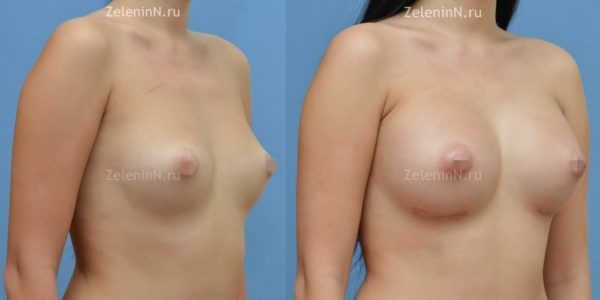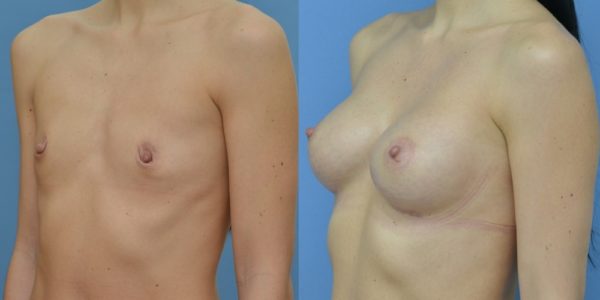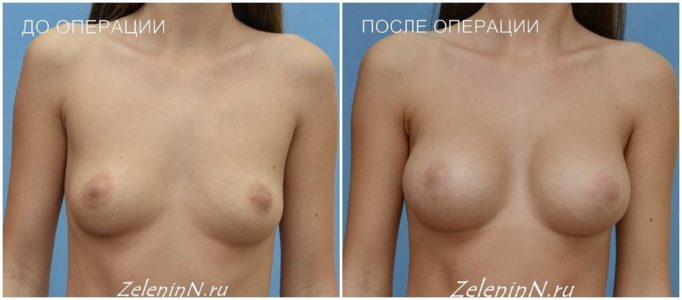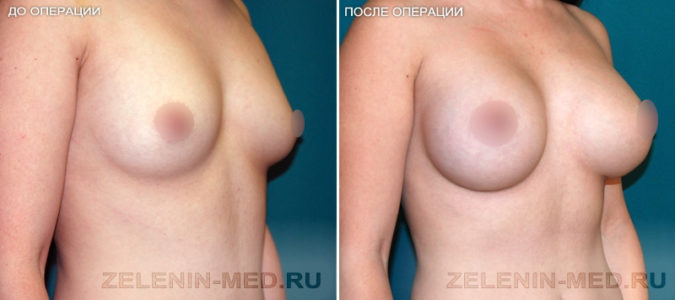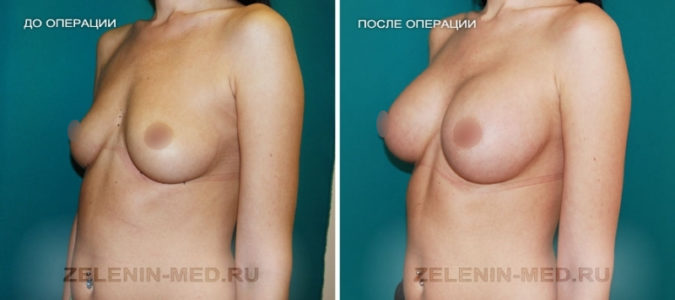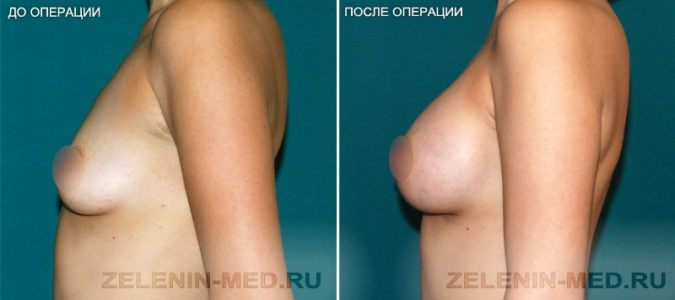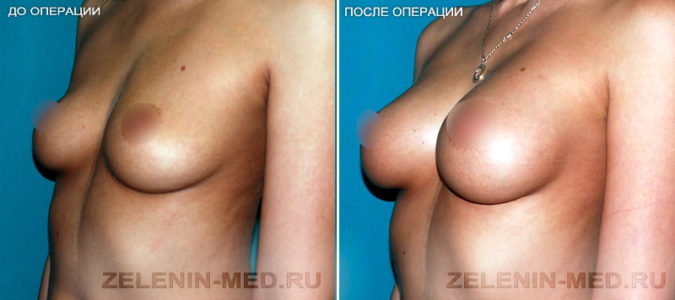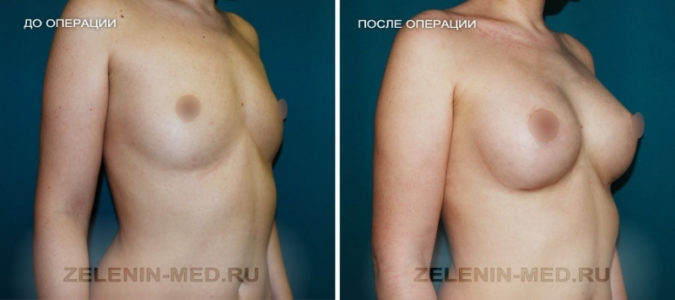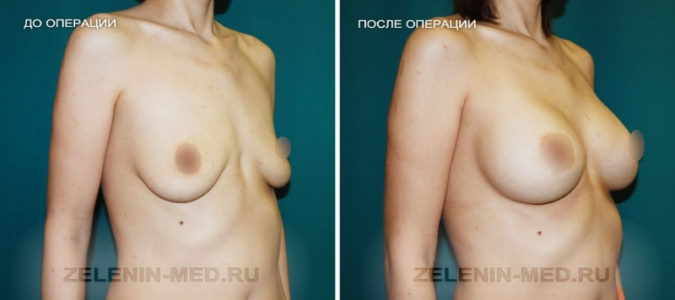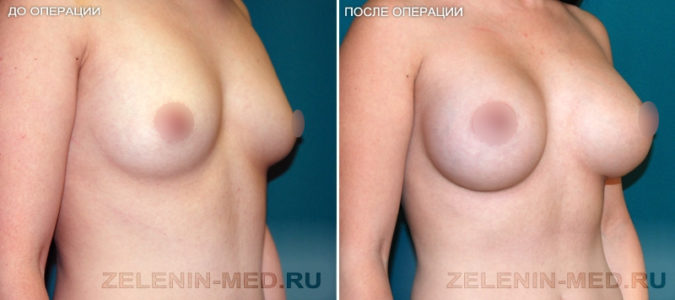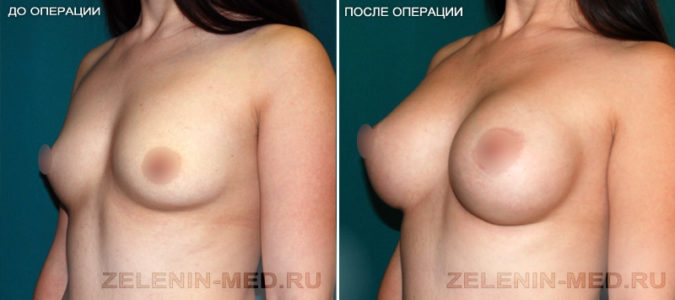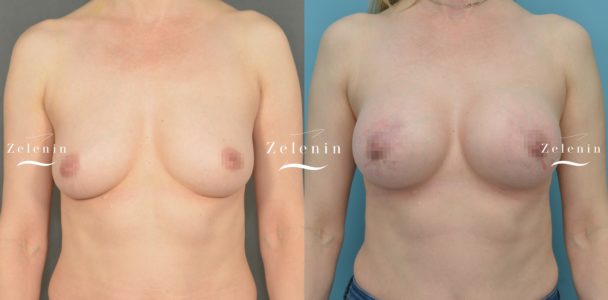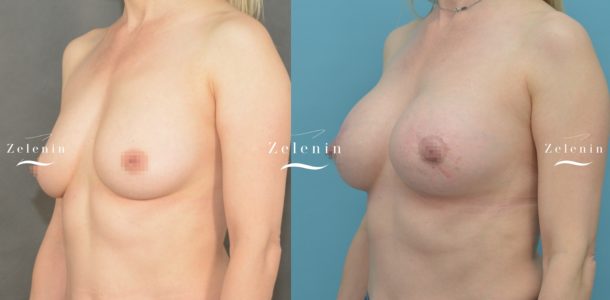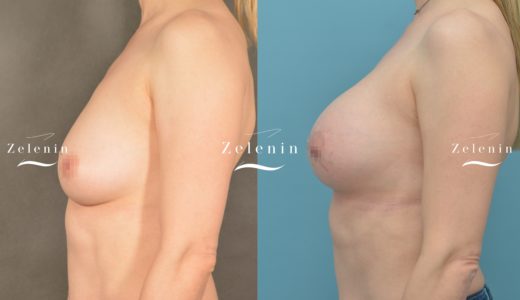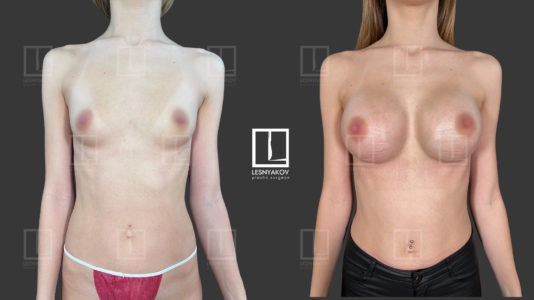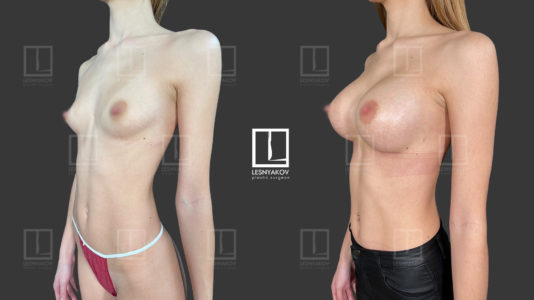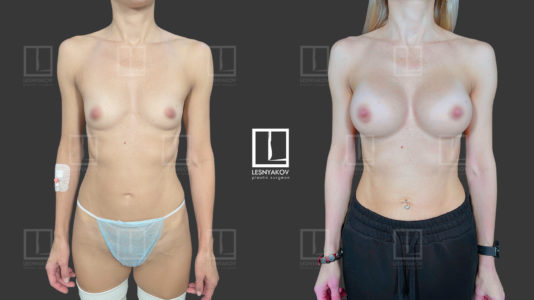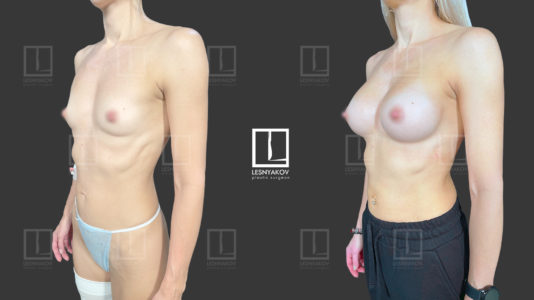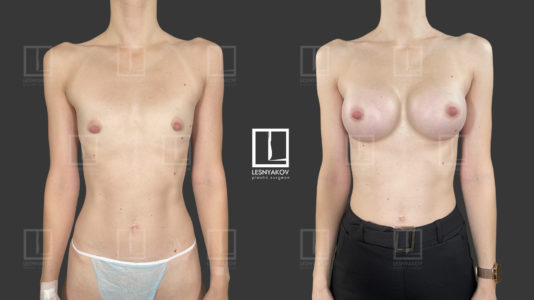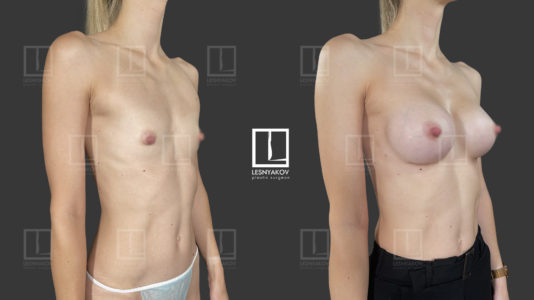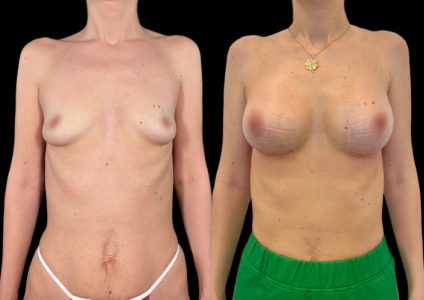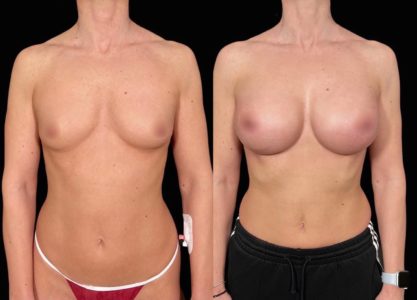Breast augmentation
Breast endoprosthetics
At LANTSET, our doctors perform all types of breast augmentation surgeries:
• Endoprosthetics of mammary glands
• Endoprosthetics of mammary glands in case of tubular breast deformity
• Injecting patient’s own fat to increase breast volume
• Repeated mammoplasty with replacement of implants and capsulotomy
• Endoprosthetics of mammary glands using endoscopic appliances
• Mastopexy (breast lift)
OPERATION STEPS
The operation is performed under general anesthesia and lasts about an hour. At the end, bioresorbable sutures are applied and the patient is transferred to a comfortable ward in the clinic where she stays from one to three days monitored by medical staff.
Compression underwear. Before the operation, the surgeon selects special compression underwear taking into account the patient’s specifics. Underwear is put on immediately after the surgery. Compression underwear prevents swelling, helps heal and form a beautiful breast shape.
You should wear compression underwear for three or four weeks after the surgery without taking it off, and then for another two to four weeks only at night. After that, it is recommended to wear compression underwear during workout. You will spend your first month after the surgery in compression underwear, the second month in soft underwear, and then you can use your usual bras again.
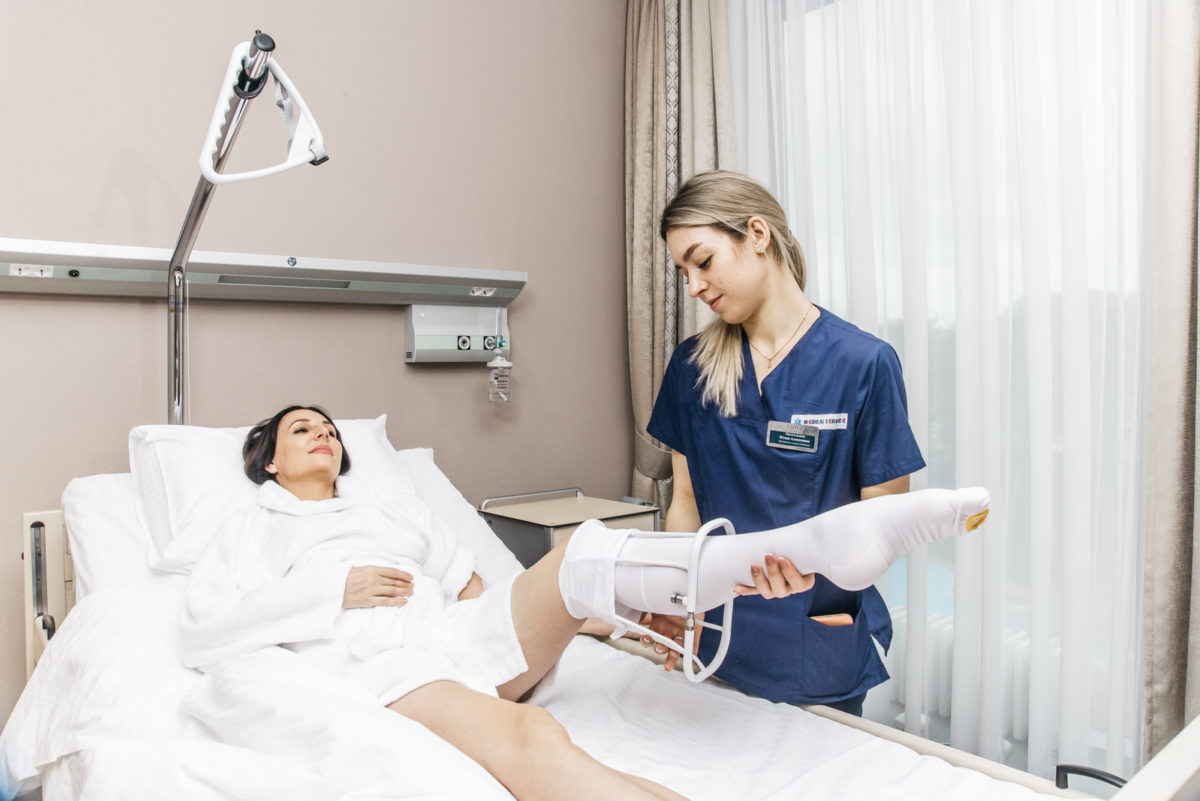
KEY INFORMATION
Types of implants. Breast implants vary depending on their shape, size, surface, filler, and profile.
Shape: round and anatomical.
The round shape of the implant is suitable for women with a wide chest and normal or high volume of subcutaneous fat.
The anatomical shape of the implant is more suitable for slender women with a narrow chest.
Our experienced plastic surgeons determine which form of implant is the best judging by the patient's body type.
Round
• Give breast nice volume in the cleavage zone and simulate a permanent push-up effect
• Visually lift breast
• When implant turns over, breast maintains its shape
• Reduce the space between breasts
• Cheaper
• Do not require precise placing
Anatomical
• Do not make the cleavage zone much bigger, create a natural breast slope
• Create a natural breast shape
• When the implant is turns over, breast may deform
• Do not reduce the space between breasts much
• More expensive
• Require precise placing
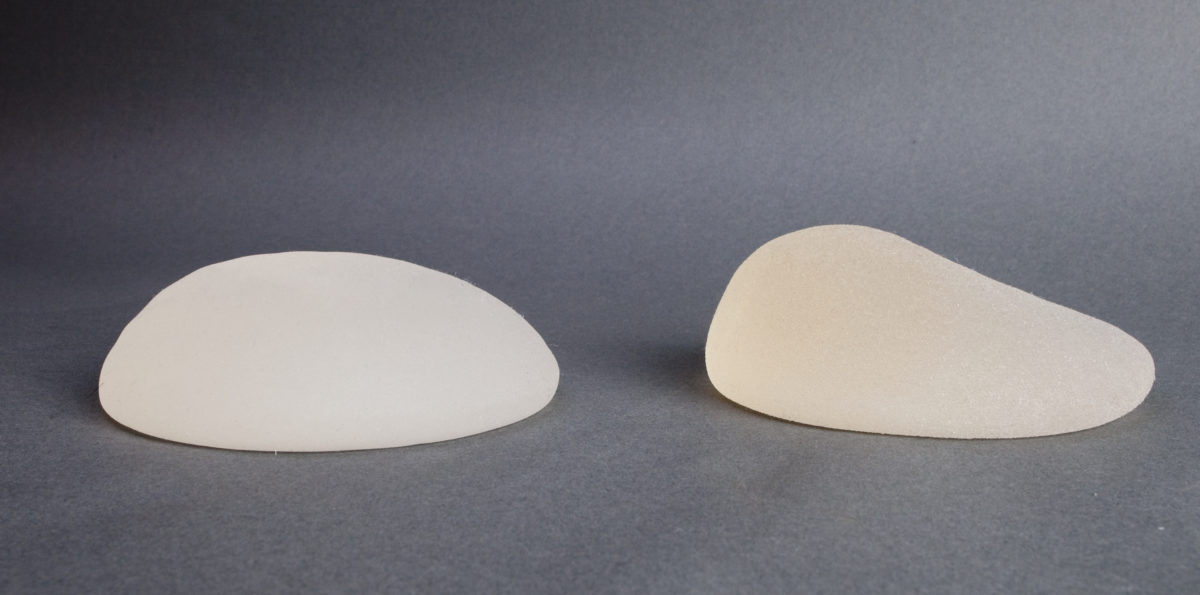
Surface type: smooth or textured
After the implants are placed, the body forms a capsule of connective tissue around them.
◾ Smooth implants are softer than textured ones. When they are placed, the breast feels more natural. But since the smooth surface has no pores, active tissue growth can lead to breast induration around the implant while the implant itself can be deformed. Another possible risk of smooth implants is that they can easily move causing an unnatural look.
◾ Thanks to the surface with pores, textured implants have good adhesion with soft tissues reducing the risk of implants shifting. By penetrating into the tiniest pores, connective tissue does not grow around the implant and does not cause a thick capsule forming.

TYPES OF BREAST IMPLANT INSTALLATION
◾ Breast augmentation in the fold below the breast -
Submammary access, submammary sulcus access.
This access is the most commonly used.
During surgery, the surgeon makes a 3-5 cm incision in the natural sulcus under the breast. After that, a pocket is formed and a silicone implant is placed. With this access, there are practically no restrictions on the shape and size of the implants. Both anatomic and round implants of any size can be inserted.
One more plus of submammary access is the absence of contact with the breast tissue, it remains intact. Function of lactation and breast-feeding in this case is preserved completely. After increasing the breast sub-mammary access, the suture is hidden in the natural fold under the breast. And the more time passes after surgery, the less noticeable it becomes.
◾ Breast augmentation through the areola -
Areola access, periareolar access, transareolar access, nipple access.
In this access, a crescent-shaped incision is made at the border of the areola and breast skin.
After the incision, the surgeon passes through the breast tissue or wraps around it from below, forms a pocket, and places the implant. With periareolar access, both round and anatomical implants can be placed. The disadvantage is that it is difficult to insert if the areola is small. Therefore, this access is recommended for patients with areola size of 2.5 cm and more.
The advantage of this access is that during surgery, it is possible to reduce the areola or correct slight asymmetry of the nipples.
In this case the scar becomes invisible more quickly and eventually disappears completely.
◾ Breast augmentation through the armpit -
Axillary access, transaxillary access
The main advantage of this access is the absence of scarring on the breast.
The incision goes through the skin fold in the armpit. In this access, endoscopic equipment can be used to form a pocket.
The access is contraindicated in the presence of prolapse of the mammary glands.
The peculiarity of the access, unlike the above ones, is that it can be used only once. If after some time you want to change the implants, you must use the submammary or transareolar access. After surgery, the scars will be hidden in the armpit and over time will not be noticeable, taking on the appearance of a natural crease.
To fix the subcutaneous tissues and skin, I use absorbable suture material that does not require removal and skin glue to protect the wound from contamination and external influences.
CONTRAINDICATIONS
The main contraindications to surgery include:
• Pregnancy and breastfeeding
• Beginning of the menstrual cycle (women)
• Malignant neoplastic process irrespective of its location
• Lower blood coagulability due to a genetic pathology or systematic use of anticoagulants
• Connective tissue diseases (scleroderma, systemic lupus erythematosus)
• High blood pressure
• Diabetes mellitus (decompensation stage)
• Diabetic angiopathy, diabetic retinopathy
• Thyroid pathology with disfunction (hypothyroidism, hyperthyroidism)
• Tuberculosis, other chronic infectious diseases
• Medical history with acute vascular events (stroke, heart attack)
• Internal organ chronic disease exacerbation
To determine whether a patient has any contraindications to surgery, a medical preoperational testing is prescribed.
To get a consultation with a plastic surgeon, call 8 800 500 02 03 or contact us via the feedback form.
Get more useful information:
- On Yandex Zen from the plastic surgeon Anton Fedorovich Lesnyakov.
- On the website трогательнаягрудь.рф from the plastic surgeon Zelenin Nikolay Vadimovich
Examples of works Зеленина Вадима Николаевича and Зеленина Николая Вадимовича
Examples of works Леснякова Антона Фёдоровича
Examples of works Корниясовой Евгении Альбертовны
